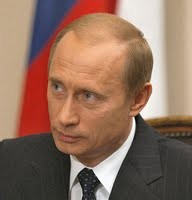Russia has been in the international spotlight in recent months, with frustration over endemic corruption, lingering anger over December’s manipulated Duma elections and Vladimir Putin’s carefully orchestrated return to the presidency bringing Russian protesters out into the streets in greater numbers than at any time since the fall of the Soviet Union. But despite its political crisis, Russia retains the ability to impact U.S. interests worldwide: The Kremlin is unafraid to flex its still-considerable muscle abroad, blocking U.S.-led efforts to sanction and topple the bloody government of Syrian President Bashar al-Assad, threatening to upend European and even global security over NATO missile defense plans and continuing to pressure former-Soviet neighbors into economic reintegration in exchange for lower energy prices.
Responding to the challenges and the opportunities posed by Russia will be a clear priority for Washington going forward, and no matter who wins the presidential election in November, the next U.S. president would benefit from a clear understanding of what Russia’s leaders want and how they are likely to behave in the coming years. As it has for every previous administration going back decades, the U.S. intelligence community will seek to provide that understanding as part of a comprehensive strategic forecasting exercise. The latest iteration, dubbed “Global Trends 2030,” should be completed by the end of this year.
But strategic forecasting is a two-way street, and American policymakers would also benefit from understanding the vision of the future that is driving decision-makers in Russia and beyond. Thanks in part to its legacy as a global superpower, Russia’s analytical community has had quite a bit of practice at strategic forecasting. But the discipline has evolved considerably since Soviet times, converging to a surprising degree with the work of Moscow’s former Cold War rivals in the West.

